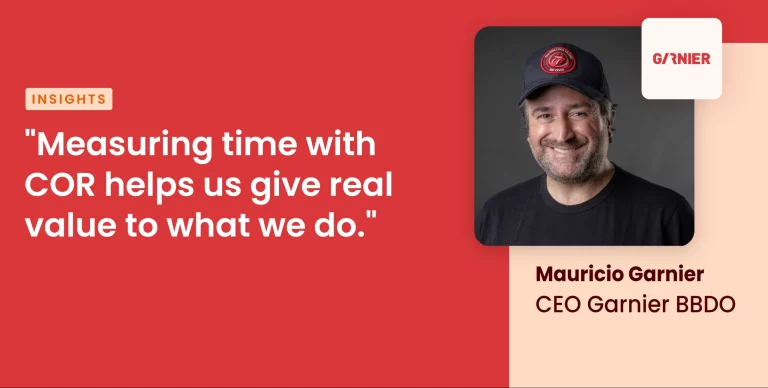Having a clear and transparent understanding of daily operations is the main key to making informed and effective decisions.
Profitability optimization starts with transparency and internal visibility of projects and resources. A lack of visibility in this aspect can lead to underutilization of resources and decreased profitability. Transparency not only builds solid relationships with clients by sharing internal processes but is also essential for effective time and resource management.
In the professional services sector, timely delivery and strategies are crucial, but internal management is equally critical to be efficient and profitable. Transparent management implies having complete visibility of operations, which allows for avoiding time deviations and accurately estimating the hours dedicated to each project. This knowledge is vital for renegotiating rates and avoiding common problems such as disparities between the work sold and the work executed.
The first step to stop thinking of visibility as a problem and transform it into a benefit is to have all the project information in one place and thus be able to identify deviations.
Centralized visibility: the first step
Having visibility of deviations with the client, i.e., the difference between the actual hours spent and the hours budgeted at the beginning, allows for a more reliable ground for negotiating rates.
Concrete data about the time and resources used in projects are essential for communicating to the client the value of the work performed, including time, creativity, and expertise provided.
Moreover, project management and the availability of dashboards for real-time visibility are crucial for identifying deviations and improving communication with clients. This includes visibility of deviations, deliverables, rework, and operational capacity, which are fundamental for the proper allocation and management of resources.
Companies that provide professional services need to demonstrate to the client with concrete data what the causes of time deviations are and thus reach the stage of renegotiating rates. Thanks to the correct use of a project management tool, we can know these data.
Capacity planning and project monitoring are fundamental tools that only a few consultancies use adequately.
Visibility in processes with clients allows us to achieve fluid feedback, allows us to detect quick deviations, or identify over-requests in a more agile manner, allowing us to address the issue in time, thus aligning the expectations and priorities of the project itself and with delivery times. Having this visibility and having a tool where all this data and communication with the client can be centralized is key to a good relationship with the client.
Anticipation and Strategic Management
The key is to anticipate post-mortem analyses of deviations and instances of renegotiation contextualized with concrete and timely data (it’s not about claiming things that happened 6 months ago, much closer checkpoint instances can be made).
Transparency and strategic management can transform the relationship with clients and anticipate renegotiation needs, avoiding late conflicts.
Through meticulous tracking of time and demonstration of the tangible impact of resource management on project outcomes, consultancies can instill confidence and foster long-term partnerships based on respect and mutual understanding, achieving more fair rates based on real and updated data.
Visibility allows knowing which services, clients, or projects contribute to or detract from your profitability.
It is essential to make adjustments in the initial budgets/SOW. Defining and agreeing on an initial scope of work, monitoring its execution, and adapting to changes and new requests are key steps to maintain profitable projects and relationships. This approach prevents problems such as low wages, high turnover, and talent loss, ensuring the company’s success and differentiation in the long term.
In summary, the process is “we define/agree on an initial SOW”. We start executing, and the key is to show how we are doing against that SOW. Brands also do not benefit when a consultancy does not have profitable clients/projects. Maybe in the short term, yes, but in the long run, this will turn into > low wages > turnover > loss of talent > loss of differential > loss of clients due to lack of added value.
Identification of profitable and non-profitable clients
Get a complete picture of all the types of services you offer, to be able to discern which ones are profitable for you and which require adjustments. Avoid competing for services that may generate losses and compete for campaigns that do not align with the value of your team’s time.
New technologies can help predict profitability in real-time and negotiate better rates.
- Identifying the clients and projects that contribute to or detract from your profitability: Through dashboards, you can get information on the most profitable clients and projects versus those that bill the most. It is essential to make decisions to correct the profitability of your projects before finishing them at a loss.
- Understanding which services contribute to your business’s profitability: Get a complete picture of all the types of services you offer, to be able to discern which ones are profitable for you and which require adjustments. Thanks to the analysis of budgeted hours, estimated hours, and invested hours, in real-time, you can make decisions that favor your profitability.
Conclusion
The first step is to manage our operations based on information to, with it, provide visibility to our clients.
Real data and access to information on the progress of each project, the rework, and the status of each, generate greater transparency and trust with clients to negotiate fairer rates.












